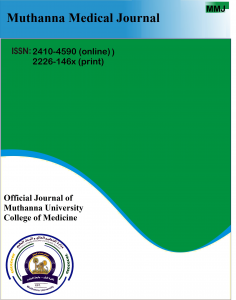Muthanna Medical Journal

Volume 6, Issue 1, June 2019, Pages 26-36
http://dx.doi.org/10.18081/2410-4590/2019-17-27
Research Article 
Thaer M. Farhan¹, Rafah M. Shlash²
* Correspondence author: aljomaili2005@gmail.com
¹Clinical & Applied Anatomy & Embryology, College Of Medicine, University of Fallujah
²Anatomy & Histology, College Of Medicine, Babil University
Received 9 October 2018, Accepted 29 January 2019, Available online 30 March 2019
This is article distributed under the terms of the Creative Commons Attribution License (http://creativecommons.org/licenses), which permits unrestricted use, distribution, and reproduction in any medium, provided the original work is properly cited. Copyright © 2019 TF
Abstract
The placenta is a temporary organ required for the development of embryo and fetus. It allows the physiological exchange between the fetus and the mother. Endothelin is a human protein has three isoforms, endothelin-1, -2, and -3. Endothelin-1 (ET- 1) is the most potent and long lasting vasoconstrictor known. Endothelin has two receptors, ETA and ETB, ETA receptors are found on the external surface of the vascular smooth muscle cells of blood vessels, and binding of endothelin to ETA increases vasoconstriction.Objectives: To study the histochemical distribution of vasoactive agent (endothelin -1) in placental tissue after normal vaginal delivery and elective caesarean section, this might be a determinant of the onset of parturition. The current study includes studying forty two placentas (21NVD&21CS) with an eccentric cord insertion were obtained from a healthy pregnant female (with no hypertension, diabetes mellitus, or gynecological diseases or any other major diseases). The placental tissues were histologically prepared for paraffin sections. Staining procedure includes histochemical stain for endotheline-1 using goat polyclonal IgG antibody against endothelin-1 as primary antibody and biolinylated as secondary antibody. An immunostaining score according to the graduated intensities of the reaction product was defined and scored blindly by two investigators who scored Staining intensity (-, +, ++, +++, ++++). The median intensity of ET-1 was highest in placenta delivered by normal vaginal delivery (++++) and lowest in those by cesarean section (+). The normal vaginal delivery group of placentas was associated with statistically significant higher median ET-1 stain intensity compared to that of cesarean section group. In-conclusion: ET-1 activity in placental tissue is significantly higher in normal vaginal delivery group. Keywords: Endotheline1, Placental histochemistry, Immunocytochemistry, Human placenta